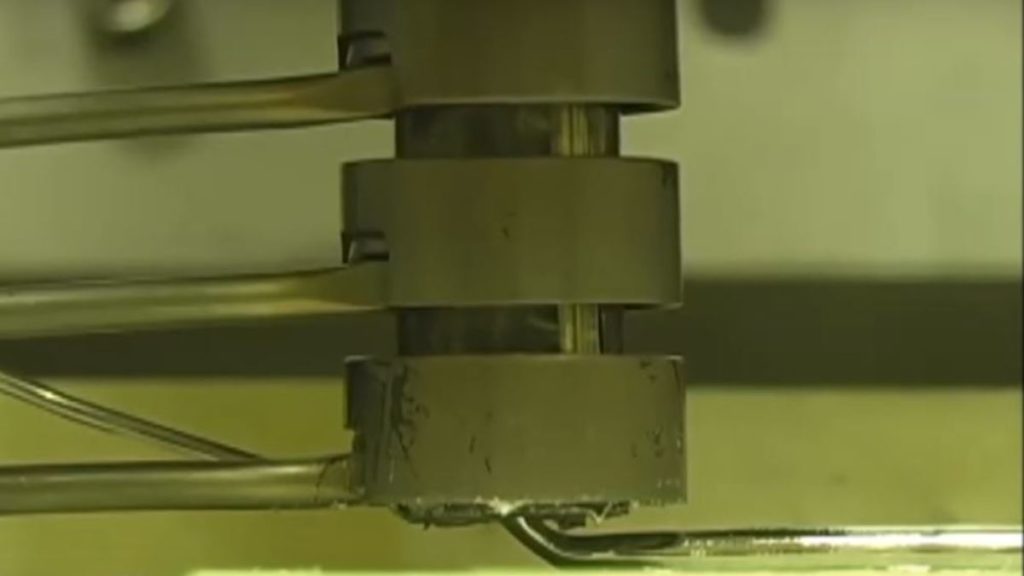Developed a new technology for 3D printing of metal products

A team of engineers from Lawrence Livermore National Laboratory (LLNL) has developed a new technology for 3D printing metal products that is completely different from the existing technologies for laser melting of metal powder, which are now ubiquitous in various industries. This technology uses metals in a critical semi-solid state that can flow through the nozzle of the printer head under the pressure applied to them. And the further development of this technology will make it possible to organize the production of higher quality and lighter metal products that do not require subsequent mechanical processing.
The developed technology is called direct metal writing. In this technology, a metal workpiece is preheated to a temperature at which the metal or alloy passes into a semi-hard-semi-soft state. In this state, small solid metal particles are present in the volume of the metal, surrounded by a layer of liquid metal, which has already melted. And when a not very large pressure is applied to such a metal, solid metal particles break away from each other, and the metal begins to flow through the nozzle of the head, like toothpaste squeezed out of a tube.
Naturally, leaving the nozzle of the 3D printer and coming into contact with the colder layers of the same metal or substrate material, the metal cools and becomes solid. The temperature of the metal emerging from the nozzle is selected so that the metal is reliably alloyed with the previous layers and at the same time a large number of defects in the form of bubbles or cavities does not begin to form. “The main issue that we had to solve was the most precise and tight control over the flow of metal out of the printer head” – Andy Pascall says, “And when we created the technology for such control, we were able to print various structures in this way who have never done this before. “
But before this technology gets to the industrial stage, engineers from LLNL will have to do a lot more work. The first task that they will solve in the very near future will be the task of increasing the resolution of three-dimensional printing. And then they will move on to the task of using in printing materials widely used in industry, aluminum, titanium and alloys of these light metals. Currently, a prototype 3D printer uses a bismuth-tin alloy with a low melting point. On the one hand, this eliminates a lot of problems and facilitates the printing process, and on the other, it leads to additional difficulties, because this alloy quickly solidifies and particles of hard metal clog the nozzle of the printer head.
Researchers have now begun experimenting with some aluminum alloys that have a higher melting point. This, in turn, leads to a number of technical problems, but, as they say, “the game is worth the candle,” because parts and assemblies made of such alloys can be used on the ground, in the air and in space.
Source: http://www.dailytechinfo.org